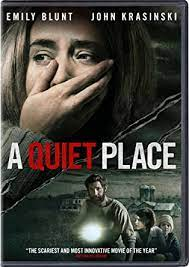In this blog I will be discussing the process me and my group went through to create our current script. The script had a certain format. locations, character dialogue, transitions, and more...
Monday, February 28, 2022
Script writing
My Stripboard and Production Calendar
My Stripboard and Production calendar
The stripboard was the first part in this weeks assignment. Me and my group picked out the scenes that took less time and chose to do those first. For my group ours was a scene showing the school. The stripboard was split up into 5 days. The first day was showing around the parts we were going to be shooting. The second day we will be filming in the library same as day 3 day 4 and day 5 we will be in the hallways.
Wednesday, February 23, 2022
Case study
The usual age for the target audience of a horror film is 15- 25. The most common reason for this is that young adults and teenagers enjoy thrills. These thrills are more likely to excite a younger audience rather than an older one.
Paramount Pictures released the first trailer for A Quiet Place in November 2017. It aired a 30-second commercial for the film during the US football championship Super Bowl on February 4, 2018. Of the seven trailers that aired during the playoff, A Quiet Place and Red Sparrow were shown during the pregame and had the lowest views and social conversations. A Quiet Place had 149,000 views on YouTube, 275,000 views on Facebook, and 2,900 social conversations. On February 12, 2018, Krasinski appeared on The Ellen DeGeneres Show to present the full trailer for A Quiet Place. The studio spent an estimated $86 million on prints and advertisements for the film.
Paramount Pictures released the film in 3,508 theaters in the United States and Canada on April 6, 2018, alongside Blockers, Chappaquiddick, and The Miracle Season. The film made $18.9 million on its first day, increasing weekend projections to $47 million. Unlike most horror films, which are front-loaded on Friday and suffer drops the rest of the weekend, A Quiet Place made $19.1 million on Saturday. It went on to debut to $50.2 million, topping the box office and marking the biggest opening for a Paramount film since Star Trek Beyond in July 2016. Through its first two weeks of international release, the film had made $51.7 million, with its top markets being the United Kingdom $9.2 million, Mexico $5.1 million, Australia $4.6 million, Brazil $3.9 million, Indonesia $3.4 million, the Philippines $2.7 million and Taiwan $1.9 million. It also debuted to $2.2 million in Russia, the biggest-ever opening for a Paramount horror film in the country. In its third weekend overseas, it dipped only 37% for a total of $15 million from 57 markets. In its fourth weekend in international markets, it grossed $6.6 million. As of May 20, 2018, the film's largest markets were United Kingdom $16.3 million, Australia $9.3 million, Mexico $7.5 million and Brazil $6.9 million. The film was released in China on May 18 and made $17.7 million from 8,731 screens in its opening weekend.
Production, distributions, exhibition
Production, distributions, exhibition
Production
Film production involves a huge amount of people power, as well as creativity and time. For a film to make it all the way to the eyes of viewers, it must go through several stages. From development to distribution, there are a few phases that shape films and make movie-going possible.
-
Horror uses unique and unusual angles to create confusion and unsettling feel with the viewer . The lighting tends to be dark, underexpos...









